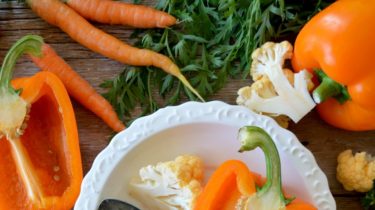Guide for a Balanced, Healthy Diet

If you have decided to adopt a healthy diet from now on, but every time you go to the market or shops, you buy the same things, it is necessary to organize yourself and understand what a healthy diet means. Choosing healthy ingredients can seem difficult considering the many products on store shelves, especially if you only consider the prices. But not only these make the difference. You might save on shopping, but not on your health. We propose a foray into the world of healthy ingredients, and let’s make a healthy shopping list together.
Greater consumption of health-promoting foods and limited intake of less healthy options are intrinsic to the eating habits of specific diets that have been proven to save our health, such as the age-old Mediterranean diet.
Others were built as part of dietary patterns designed to reduce disease risk, such as the Diet to Stop High Blood Pressure (DASH) or the Diet to Prevent Neurodegenerative Diseases (MIND). Compared to a regular diet, these healthier alternatives are higher in plant-based foods, fresh fruits and vegetables, mushrooms, fermented and low-fat dairy, whole grains, legumes, seeds and nuts and lower in animal foods, especially fatty and processed meats such as sausages.
Here are the things to remember for healthy shopping, including choosing nutritious foods, creating an intelligent grocery list, and stocking up so you can buy less and less often.
Creating a healthy shopping list
A shopping list is an essential tool for many shoppers. It can help you organize and remind you of the products you need. Plus, studies show that grocery lists can help you make healthier choices.
But what does a “healthy” shopping list include?
Generally, a healthy and complete diet should consist of whole, nutrient-dense foods. We’re talking about foods like vegetables, fruits, protein sources like fish and eggs, beans, nuts and seeds. These are foods you need to prioritize.
It divides the list into starchy and non-starchy vegetables, fruits, beans and grains, nuts and seeds, protein, frozen foods, dairy and substitutes, beverages, spices and sundries.
Here’s an example of what a healthy food list might include:
Fruits: apples, blueberries, clementines, grapefruit and avocados
Non-starchy vegetables: broccoli, asparagus, onions, spinach, peppers and zucchini
Starchy vegetables: sweet potatoes, red potatoes and squash
Beans and grains: chickpeas, brown rice, black beans and quinoa
Protein: eggs, salmon, chicken breast and protein powder
Frozen foods: frozen berry mixes and frozen vegetables
Nuts and seeds: Almonds, pumpkin seeds and peanut butter
Dairy and substitutes: cashew milk, coconut milk, feta cheese, and full-fat Greek yoghurt
Condiments: olives, sun-dried tomatoes, salad dressing, olive oil, pesto
Drinks: unsweetened coconut water and mineral water
Miscellaneous: malai, ground coffee, dried fruit, dark chocolate, banana chips and coconut.
Planning a weekly menu
You can take a weekly menu to the store instead of a regular shopping list. This menu can list the ingredients you need to prepare the meals you want to cook in the coming week.
Remember that if you’re used to eating out or ordering out for most meals, trying to prepare all your meals and snacks at home suddenly may be unrealistic. So, if you’re new to meal prep, start slow and make it a goal to prepare just a few meals the first week.
Once this becomes a habit, you can add more meals to your weekly cooking menu. Like all healthy habits, it may take some time before regular shopping and preparing healthy meals at home become part of your routine.
How to stock your kitchen like a pro
If you prefer to avoid frequent trips to the grocery store, stocking your kitchen with non-perishable and frozen foods is key. This can help you prepare nutritious meals and snacks even when you run out of fresh food.
It’s important to check your cupboards, pantry, fridge and freezer to inventory what you need before shopping. This can reduce food waste and ensure you have the ingredients to prepare healthy meals.
You will still have to buy fresh items more often, such as fresh fruit, salad greens, vegetables, tomatoes, cucumbers, eggs, mushrooms, dairy products, and other perishable products. Meanwhile, non-perishable goods and foods that can be frozen can be purchased less frequently.
Here are some ideas for foods that last longer, which you can keep in your pantry and freezer:
Pantry:
Nuts, seeds and nut butter: pistachios, cashews, almonds and natural almond butter
Oils: olive oil, sunflower oil, coconut oil and avocado oil
Grains: quinoa, brown rice, oats, buckwheat and rice pasta
Unsweetened dried fruit: dried mango, raisins, dates, figs, apricots, prunes and dried cherries
Spices: garlic powder, turmeric, curry powder, cumin, paprika, cinnamon, dried thyme, dried dill, black peppercorns, garlic cloves
Canned and dried beans: kidney beans, kidney beans, black beans, chickpeas and lentils
Canned fish: Canned tuna, sardines and salmon
Baking and Sweeteners: Baking Powder, Baking Soda, Honey, Maple Syrup, Vanilla Extract, Cocoa Powder and Flour Blends
Milk substitutes: coconut milk, almond milk, rice milk, oat milk and cashew milk
Sauces and condiments: simple mustard, tomato sauce – unsweetened broth, olives, sun-dried tomatoes, apple vinegar, balsamic vinegar, salt-free soy and hot sauces (tabasco)
Snacks: Plain popcorn, banana chips, quinoa, tortillas, and almonds
Vegetables: sweet potatoes, potatoes, onions, zucchini, eggplant, squash, green onions and garlic
Root vegetables: ginger, turmeric, carrots, parsnips, beets, turnips
Miscellaneous: unsweetened desiccated coconut, dark chocolate chips, pea protein powder, coffee.
Freezer:
Protein sources: chicken, turkey, salmon, lean beef, lamb chops
Frozen fruits and vegetables: cherries, cherries, berries, mango, spinach, edamame, broccoli, peas and cauliflower
What a healthy shopping cart can look like
Everyone has different dietary needs, but a healthy round of shopping generally means a cart full of nutrient-dense foods.
Here’s an example of what a healthy grocery cart might contain:
Non-starchy vegetables: cauliflower, asparagus, broccoli, capsicum, chilli, onion, garlic, bell pepper, greens, leeks and mushrooms
Fruits: seasonal fruits, oranges, bananas, apples, grapefruit, lemons, blueberries, raspberries, pineapples and avocados
Protein: eggs, fish, chicken, turkey and tofu
Starchy vegetables: sweet potatoes, potatoes and squash
Cereals and legumes: quinoa, oats, brown and whole rice, dried black beans, buckwheat, red lentils
Nuts, seeds and nut butter: pumpkin seeds, macadamia nuts, almonds and natural peanut butter
Canned foods: sardines, tuna, canned beans, whole or diced tomatoes, and stock
Oils and spices: olive oil, avocado oil, apple cider vinegar, balsamic vinegar, dried spices, honey and maple syrup
Dairy and non-dairy: Greek yoghurt, kefir, sana, cottage cheese, cheddar cheese, goat cheese, cashew milk and coconut yoghurt
Snacks: dark chocolate chips, mixed nuts, unsweetened dried fruit and hummus
Frozen foods: frozen raspberries and other berries, frozen shrimp, frozen fish
Drinks: plain/mineral water, herbal tea bags (lime, sage, chamomile, green tea, Ceylon black tea, lavender, ginger) and coffee
This list is incomplete or definitive but can serve as a general guide for shopping sessions.
Of course, a healthy and balanced diet has room for your favourite foods. The idea is to only partially avoid foods that are considered less healthy, such as chips, ice cream and cookies.
Instead, a well-rounded diet should prioritize nutrient-dense foods that make you feel good and provide the nutrients your body needs to thrive, all while allowing you to enjoy your favourite foods.
It is perfectly healthy to crave and enjoy foods that are not considered nutritious, but only occasionally and in small amounts.







